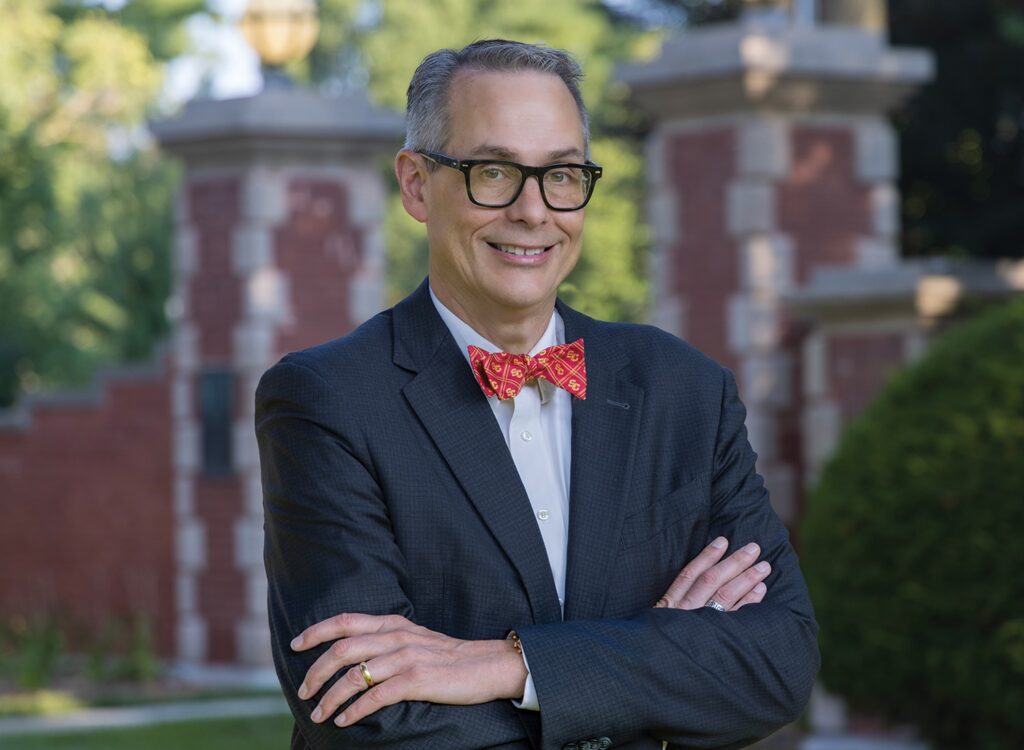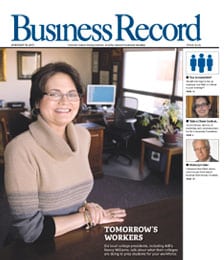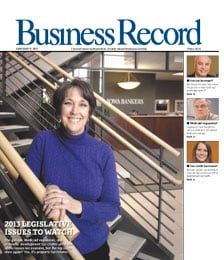Statewide coalition seeks increase in historic tax credit funding

The fate of downtown redevelopment projects such as the Younkers building, along with other projects worth millions of dollars statewide, is riding on whether the Iowa Legislature increases funding for historic district tax credits this legislative session, say Greater Des Moines Partnership officials.
The Partnership is part of a statewide coalition of economic development groups that are seeking to have the cap on the state’s historic tax credit program raised. Currently, $6.4 million in tax credits are authorized annually; the coalition is seeking to raise that to $20 million per year.
The program now has a backlog of about 75 projects for 2007 and beyond, including 11 in Des Moines, that have been approved but are awaiting funding over the next 10 years. No new applications for tax credits have been accepted by the Iowa Department of Cultural Affairs since June 2005, due to a legislative change that prevents new applications being taken to reserve credits beyond five years into the future.
Using the program, developers are issued 25 percent tax credits, which they typically sell to institutional investors such as banks or insurance companies to provide an added source of working capital for projects. Credits are usually sold at a discount equaling about 6 percent for each year they extend into the future.
“The problem is, it’s very difficult to sell a credit that’s 10 years down the road,” said David Vos, a senior development project manager for Alexander Co. in Madison, Wis. Vos, who spoke in Des Moines at a historic tax credit seminar hosted by the Partnership last week, has worked on redevelopment projects with companies in about a dozen states over the past 16 years. “So what usually happens is the developer defers (collecting) their fees until such time that they can sell the credits,” he said. “Most developers won’t go into a project entirely deferring their fee, so having credits far out in the future makes these project infeasible.”
A measure to increase the cap last session had broad bipartisan support, said Jay Byers, the Partnership’s senior vice president for government affairs and public policy, but failed to pass primarily due to budgetary concerns.
“Our plan going into this session is to have a unified bill that all of the stakeholders agree with, in addition to the Department of Cultural Affairs,” he said. “What we’ve found with the issue is that it has a lot of strengths on both sides of the aisle, and it has strengths in both urban and rural areas. There are a lot of buildings on Main Streets in small towns that would qualify for this; there are a lot of qualifying buildings in downtown Des Moines.”
Having sufficient historic tax credits available will be “extremely vital” for successfully financing the Younkers building project as well as several other downtown projects, said Tim Leach, vice president of economic development for the Downtown Community Alliance, an arm of the Partnership. City officials are currently in discussions with an Illinois developer that’s considering a $40 million redevelopment project to convert the vacant 141,000-square-foot building into a mix of residential and retail space.
“That project is going to require the state credits along with the federal (historic tax) credits, and probably some New Markets Tax Credits, and that’s on top of what conventional financing and the developers are willing to do,” he said. “It’s an expensive conversion, so it’s going to need many layers of financing.”
Leach said at least one downtown structure, the Rumely Building adjacent to the Science Center of Iowa, would already have been converted into office space had historic tax credits been available. Seattle developer Dick Sontgerath is now looking into putting subsidized apartment units there because low-income housing credits are more readily available, Leach said.
Vos, the Wisconsin developer, said the only states his company works in are those that offer historic tax credits.
“Part of the reason is, there is much more competition for those (funding) tools that local communities just can’t bridge funding gaps like they used to if they don’t use them,” he said. “The historic tax credits give us the funds necessary to close that gap.”
One of several Iowa projects Vos’ company is currently working on is the rehabilitation of the historic Crescent Warehouse District, a four-block area in downtown Davenport. One historic warehouse has been converted into a 73-unit apartment complex, and the company is now working on converting two more warehouse buildings into apartments.
Because the company applied for credits set aside for cultural and entertainment districts soon after that funding was increased in 2004, it was able to secure the credits needed for that project, Vos said. However, “we have a couple of other buildings in the warehouse district, but we really can’t do anything with them because we don’t know whether those financing tools will be available.”
In 2004, the Legislature raised the cap, which had been at $2.4 million since the program’s inception, by $4 million. “But even with that bump-up there is still that waiting list,” the Partnership’s Byers said. “We think that by raising the cap to $20 million we’ll be able to catch up on the backlog and be able to fund projects going forward.”
Among the groups supporting the increase with the Partnership are the Iowa Chamber Alliance, the Iowa League of Cities and the Professional Developers of Iowa., Byers said.
Created by the Legislature in 2001, the tax credit program has facilitated more than $188 million in renovation of historic properties across the state, according to a fiscal 2005 report issued by the Department of Cultural Affairs.
Bob Brunkhorst, a Republican from Waverly who had co-chaired the Senate Economic Growth Committee, said he believes “there’s definitely a need out there” for the credits. Finding a way to fit the credits into the state budget will be the key, said Brunkhorst, who did not seek re-election this year.
One project in his district that benefited from the tax credits and was valuable for development efforts was the revitalization of a building into office-retail space in Sumner that’s now used by an antiques dealer and a real estate agency, he said.
Brunkhorst said careful selection of projects is necessary.
“We have to do (projects) in such a way that not only promotes historic preservation, but also economic development,” he said. “There have been times where we’ve just hit one [goal]. If we’re not [achieving both], then that building is just going to deteriorate again.”






